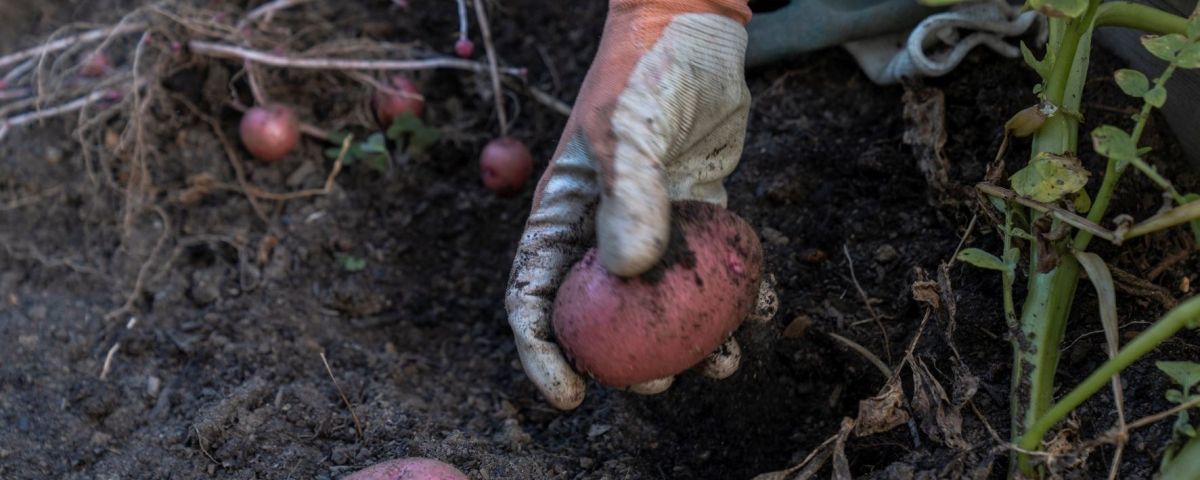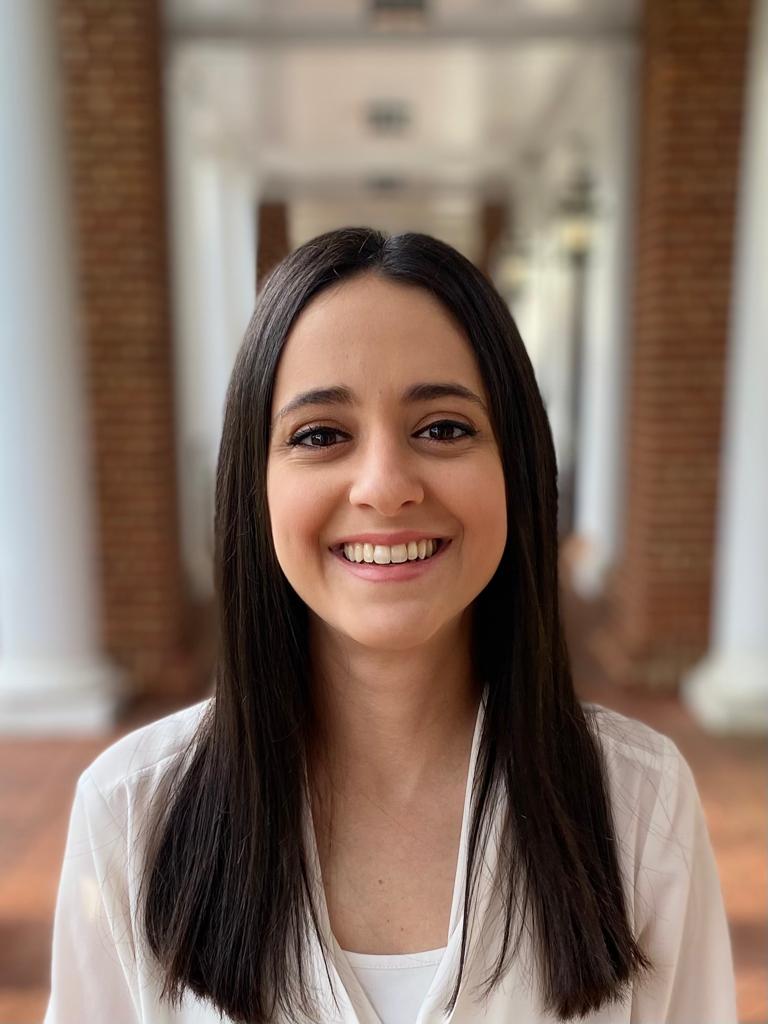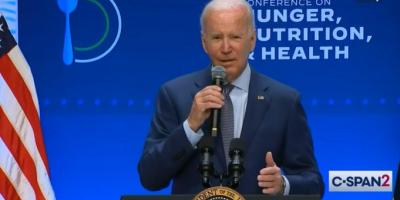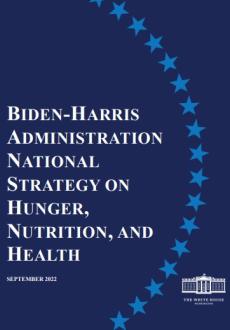
Charlottesville resident Nayia Koullouri, a member of UVA's Sustainable Food Collaborative, joined the digital White House Conference on Hunger, Nutrition and Health. Here are her take-aways.
By Nayia Koullouri
On September 28, the Biden-Harris Administration hosted the White House Conference on Hunger, Nutrition and Health in Washington, DC. This was a big step, as it’s been more than 50 years since the first and only White House conference on the topic was held in 1969.
As a member of UVA’s Sustainable Food Collaborative, I was really excited that I could attend online and learn about all those great initiatives that could be utilized by our group and our University.
The 1969 conference made significant progress towards reducing food insecurity, however, there is still a lot that needs to be achieved. According to the National Strategy, 1 in 10 households experienced food insecurity in 2021, facing an urgent, nutrition-related health crisis due to the rising prevalence of diet-related diseases such as Type 2 diabetes, obesity and hypertension, which disproportionately impact underserved communities. I was surprised to hear that heart disease is the leading cause of death in America, that 19 states and 2 territories have at least 35% of residents with adult obesity, and that 1 in 3 people will have cancer in their lifetime.
The Biden-Harris strategy sets a goal to end hunger and increase healthy eating and physical activity by 2030. To achieve this goal and build on the federal government’s existing work, 5 pillars have been identified:
- Improving food access and affordability;
- Integrating nutrition and health;
- Empowering all consumers to make and have access to healthy choices;
- Supporting physical activity for all;
- Enhancing nutrition and food-security research
In this conference there were a variety of partners engaged in delivering results in the five pillars identified. I attended Pillar 3A - “Look Locally: Growing Partnerships to Expand Local Food Options.” Speakers included Chuck Conner, President and CEO of the National Council of Farmer Cooperatives, Sherrie Tussler, Executive Director of Task Force Hunger and director of Wisconsin’s largest food bank, Tara Roberts Turner, farmer at Turners Fresh Market & Greenhouse and General Manager of Wisconsin’s food hub cooperative, Charlene McGee, with Multnomah County, Portland, Oregon, and Phoebe Wong, who took part in farmer school initiatives.
What I found to be the major take-away of this panel discussion was that all the challenges can be tackled through innovation and by giving voice to the affected population to be included in the design of these solutions. As it was also highlighted in the strategy, this work requires a group effort that includes state, tribal, local and territory governments; academia; civil society; philanthropy; the private sector; and other partners.
USDA support of local food and farm businesses
Among the other components of the National Strategy, USDA will make investments to support local and regional food and farm businesses through grants and other financial assistance for food hubs, distribution and processing as well as technical assistance particularly in support of underserved communities to provide nutritious food to schools, food banks and other nutrition assistance programs.
Financial constraints and banks not willing to invest in farming entrepreneurship are major barriers faced by the farmers and local institutions, which were mentioned repeatedly throughout the panel discussion, as well as procurement laws, logistics and access to land. The USDA will need to find the resources to understand the requirements of each community and address any bespoke needs. I believe that the prioritization of the fund distribution will be another challenging strategy for the USDA which can be achieved in the long term.
Farm-to-school programs creating role models
USDA should expand their funding for farm-to-school programs, which are crucial to students’ education and well-being. Mrs Wong mentioned an example of a successful initiative that leveraged partnership and federal assistance to expand local food, where the New England Dairy Council assigned a cow and a farmer to each school. Norris Elementary School in East Hartford was assigned with a woman farmer, who surprised the students as they were unaware that they can follow agriculture as a field of study and that women can become farmers too. This farmer was a role model for these students, especially for the girls as they were impressed and expressed their wish to become like her when they grow up. To me, this verified the significance of this program in the students’ life. It was also mentioned during the panel discussion that local schools love local food as it gives students a voice and I support this.
Further initiatives which were discussed during the panel, included the distribution of local food boxes, an idea that I really loved. The food boxes include recipes and stories of the local farmers, so the community could learn more about their food’s origin. One consumer described the box opening experience as if they had gone on vacation.
Lack of diversity
I was really shocked when I heard about the percentage of Black farmers, which represent only 0.5% of US farmers. Mrs McGee highlighted that the major challenge of promoting participation by farmers of color who are trying to get in the market is racism and that the farms which are thriving today tend not to be owned by Black farmers. I am really hoping that as part of the new USDA plan, more opportunities will be given to these communities to shine and finally fulfill their dreams.
An archaic system
All panelists agreed that local food procurement is so difficult due to the outdated policies that need to be scrapped or updated to reflect the current situation. Some of these policies were relaxed during the pandemic, which made the processes more efficient and thus the panelists were suggesting their permanent relaxation. I would suggest, if not already in place, that this would be the right time for the relevant bodies involved in the policy issuance to launch consultations for their review.
School representation
During the panel discussion, I felt that we were missing the voice of the school representatives on this matter as they are directly involved in this process too.
By attending this conference, I have gained a lot of knowledge on the current situation of the US system and the barriers present. Even though some of these barriers can be challenging and will need a long term approach, I am optimistic that they will be tackled as they are prioritized by the current administration.

Nayia Koullouri (she/her) is a Food Technologist with seven years of work experience in the UK and Cyprus. She recently moved to Charlottesville with her husband who is an MBA student at the Darden School of Business. Nayia is currently volunteering with the UVA Sustainable Food Collaborative.


